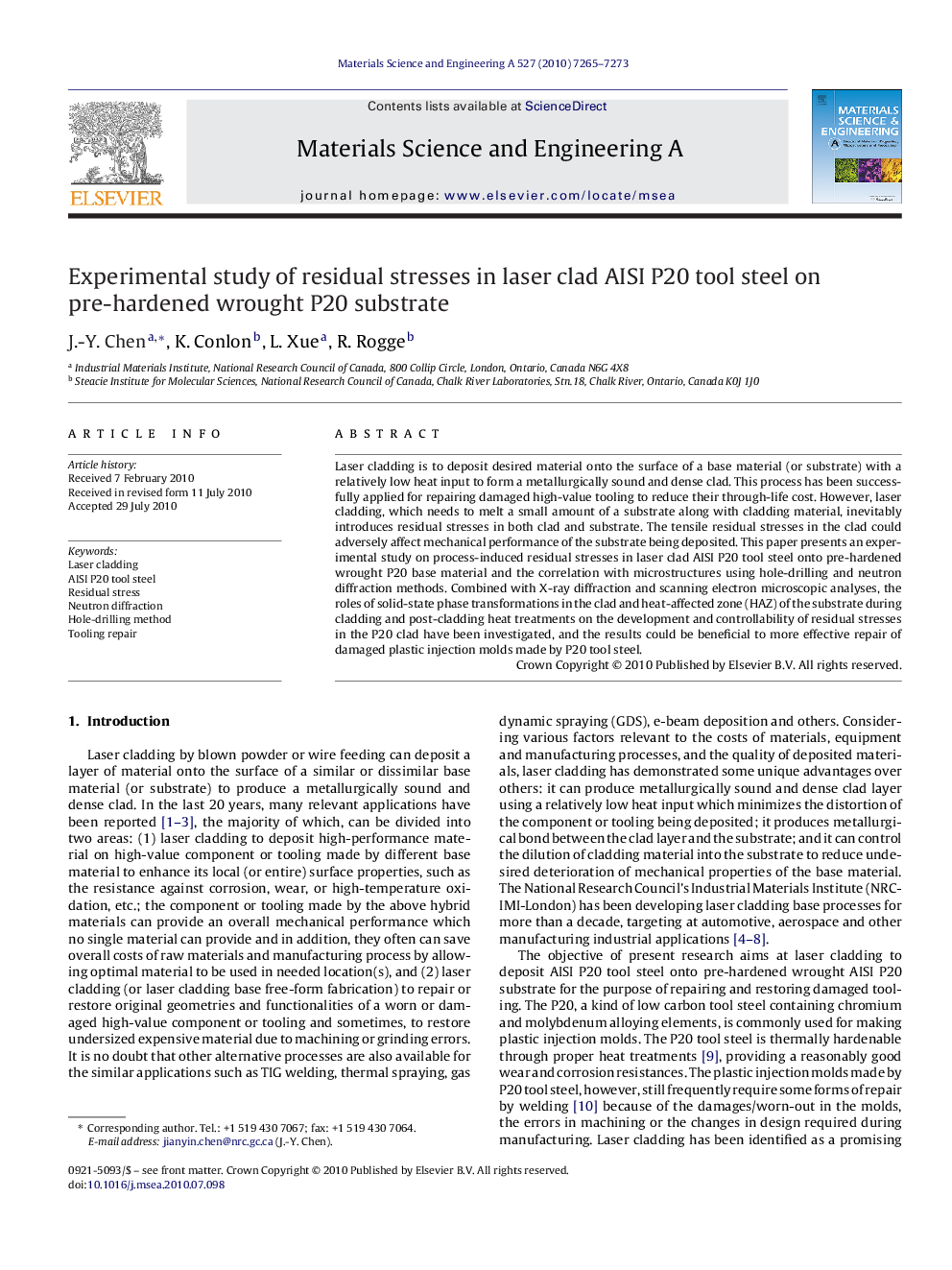| Article ID | Journal | Published Year | Pages | File Type |
|---|---|---|---|---|
| 1579400 | Materials Science and Engineering: A | 2010 | 9 Pages |
Laser cladding is to deposit desired material onto the surface of a base material (or substrate) with a relatively low heat input to form a metallurgically sound and dense clad. This process has been successfully applied for repairing damaged high-value tooling to reduce their through-life cost. However, laser cladding, which needs to melt a small amount of a substrate along with cladding material, inevitably introduces residual stresses in both clad and substrate. The tensile residual stresses in the clad could adversely affect mechanical performance of the substrate being deposited. This paper presents an experimental study on process-induced residual stresses in laser clad AISI P20 tool steel onto pre-hardened wrought P20 base material and the correlation with microstructures using hole-drilling and neutron diffraction methods. Combined with X-ray diffraction and scanning electron microscopic analyses, the roles of solid-state phase transformations in the clad and heat-affected zone (HAZ) of the substrate during cladding and post-cladding heat treatments on the development and controllability of residual stresses in the P20 clad have been investigated, and the results could be beneficial to more effective repair of damaged plastic injection molds made by P20 tool steel.
Research highlights▶ Laser cladding of P20 tool steel. ▶ Residual stress analysis of laser clad P20 tool steel. ▶ Microstructure of laser clad P20 tool steel. ▶ Tooling Repair using laser cladding. ▶ Stress reliving treatment of laser clad P20 tool steel.
